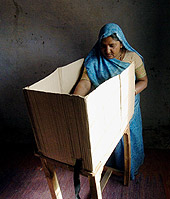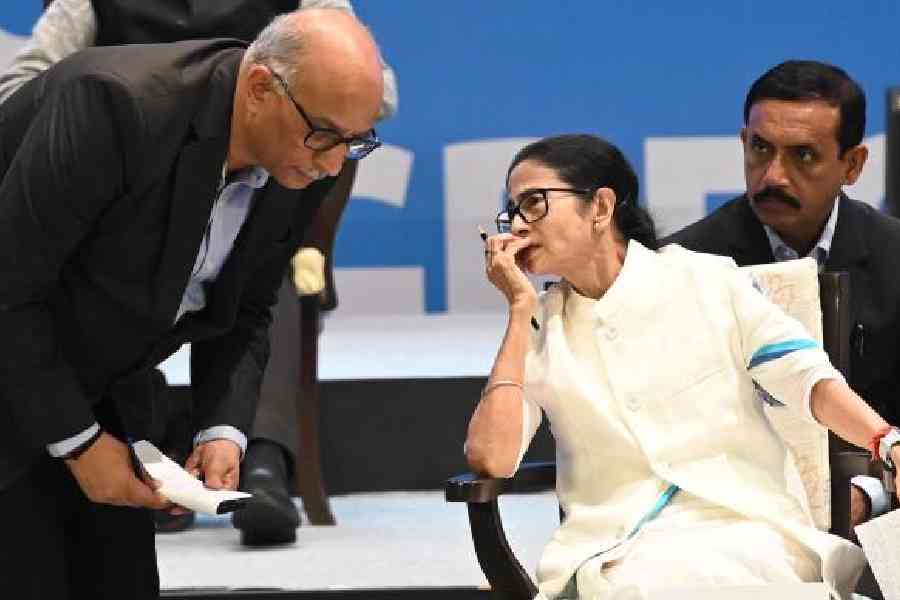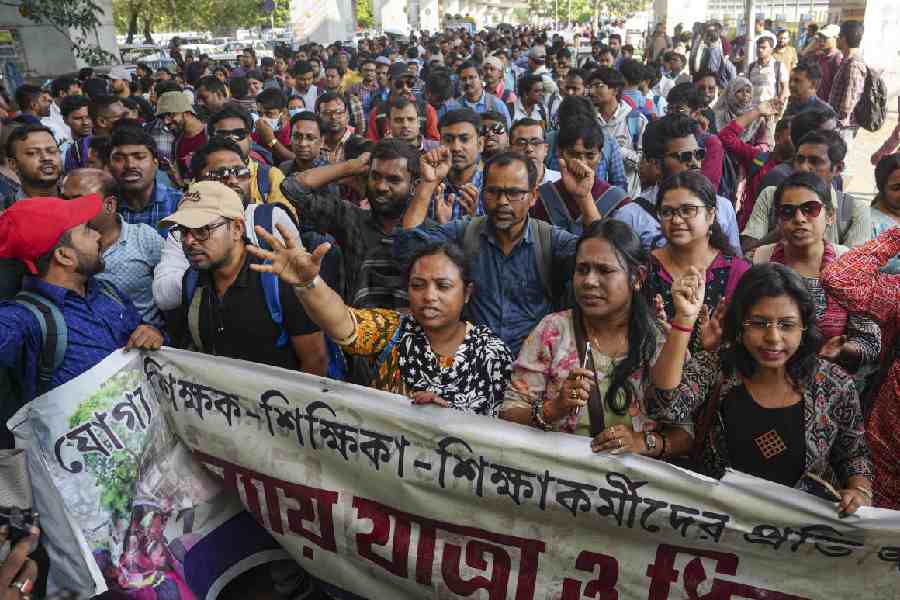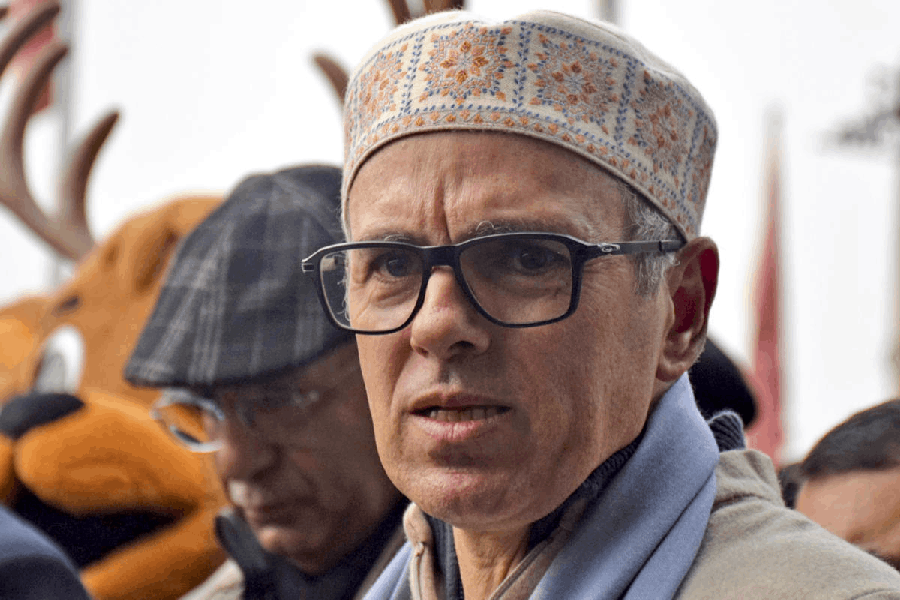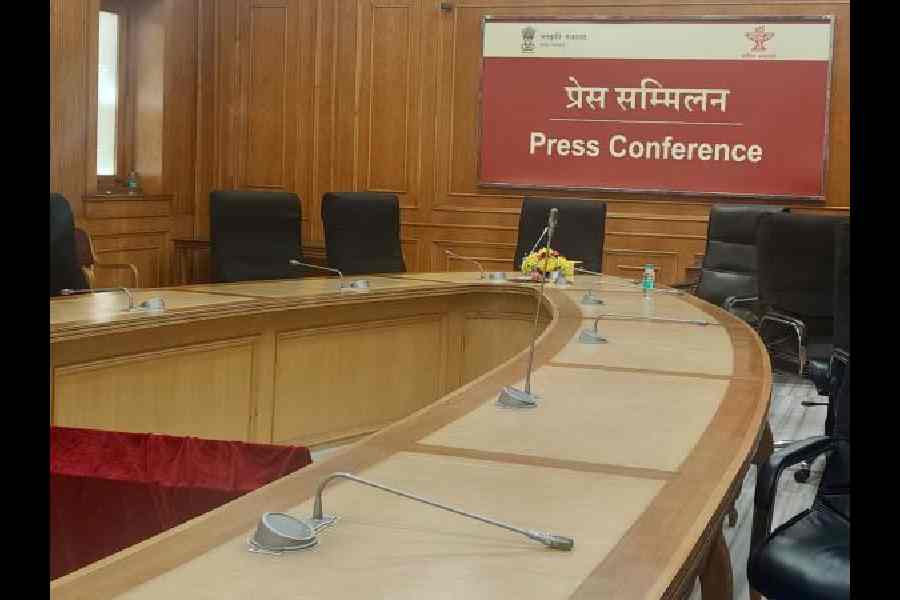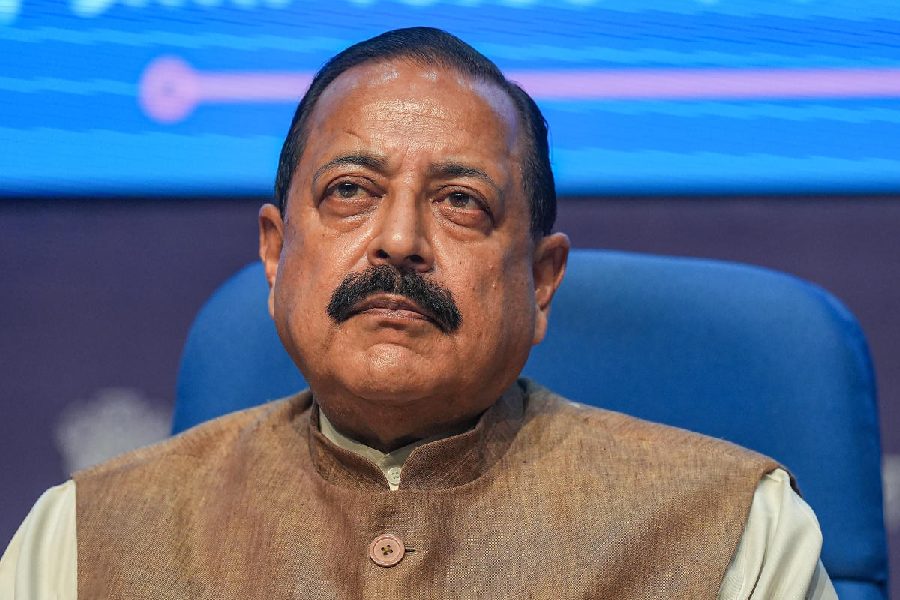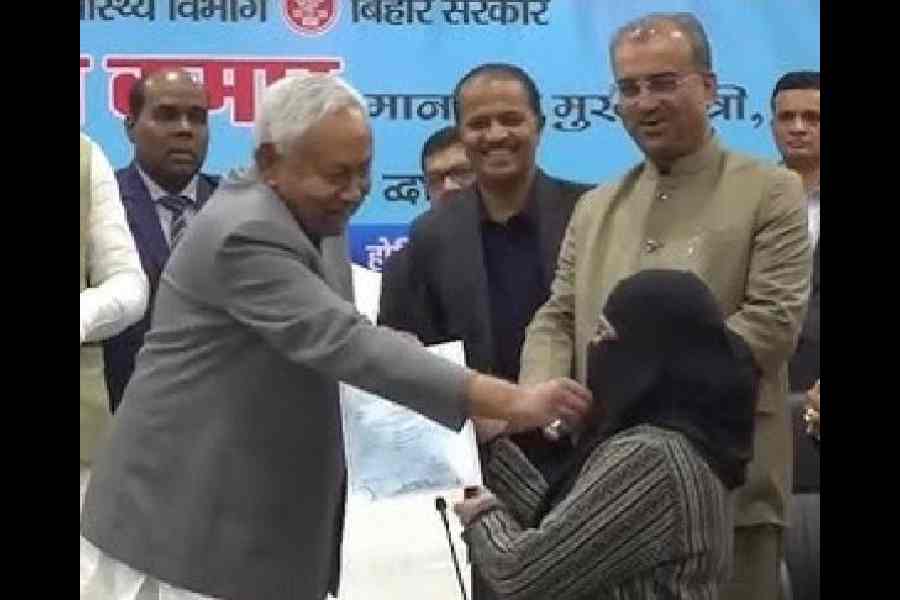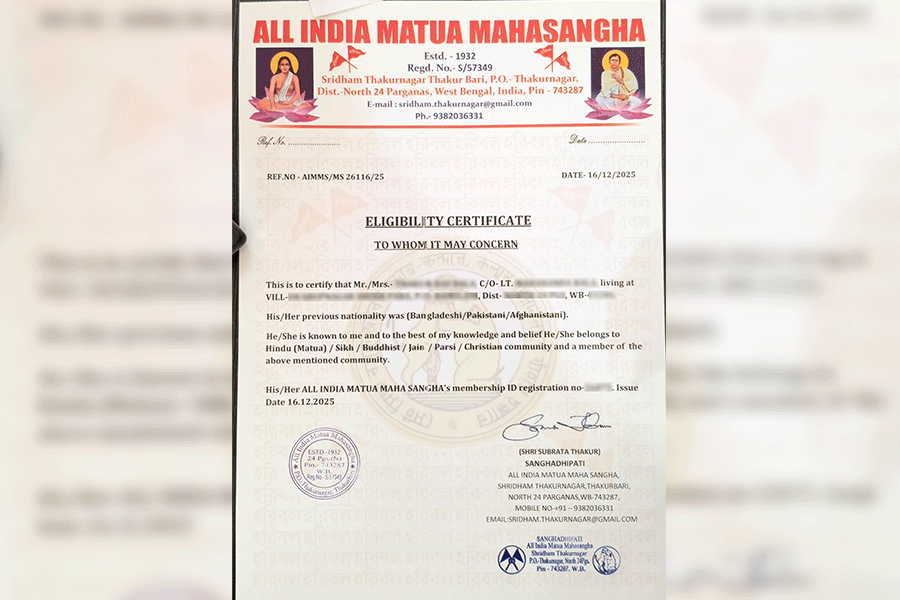 |
 |
 |
| MARGINALISED: A woman casts her vote in Jaipur on May 5(top). Arifa Khatoon (center) and Meera Tewari (above) are among the handful of women candidates in the fray. Photo: Rajesh Kumar |
Others may wear their ideologies on their sleeves, but Meera Tewari has it right up there on her forehead. Her stick-on bindi — with its imprint of an open palm — is the symbol of a party she believes in. Meera has been supporting the Congress for several years now. Yet, she looks somewhat out of place as she pulls out a chair for herself on the rickety wooden verandah of a makeshift party office in Shukal Bazaar in the Sultanpur district of eastern Uttar Pradesh.
Meera stands out because she is the only woman in a vocal group of Congress supporters. The men — old Congress hands — look away everytime she speaks. For Meera, clearly, is doing something that she shouldn't be — talking politics.
It’s election time in the country, and the women have come spilling out into the streets. They line the roads as political leaders go by. They attend meetings and cheer lustily. They wave party flags and rush to break a security barrier, to touch someone's face, or just hold a hand.
And that’s odd because they are nowhere else. They are hardly there in the list of candidates and barely there among leaders. And though they come out in droves to vote, election after election, women are seldom seen as a voter either. Everywhere, politicians and parties woo communities who come on their own before every polls. For this is the time to take up issues that affect a group or a so-called vote bank — Muslims, Jatavs, Yadavs, Kurmis, upper-caste, government employees, farmers and so on. The ones missing are women.
Sehba Farooqui, the president of the National Federation of Indian Women (NFIW), was struck by this during a tour into the interiors of the Cow Belt this summer. “I saw candidates going from village to village, canvassing for votes. But when they entered a house, they seldom talked to the women there,” she says. “I asked the women later, don’t you think it is demeaning, that politicians only want to talk to the male members of the house?”
Elections in India — a Sonia Gandhi or a Sushma Swaraj notwithstanding — are still, clearly, predominantly a male exercise. Even now, of the hundreds of thousands who come out on the streets for political campaigning, just a handful are women. In this sea of men, somebody like Meera Tewari is still an oddity — as is Arifa Khatoon in the Mishriq constituency of Sitapur in Uttar Pradesh.
Arifa sits in a stopgap Samajwadi Party election office by the roadside. She is the only woman in an all-male gathering and she is wearing a burqa, though the veil doesn’t cover her face. The difference between Meera and Arifa is the fact that every time her firm and confident voice rents the air, the others turn silent. A former Congress worker, Arifa — now in her late forties — is the SP’s deputy block president in Sidauli. “Women are slowly understanding what politics is all about,” she says.
Still, when it comes to voting power, women — nearly half of the electorate — are yet to be seen as a bloc. More than half a century after women were given the right to vote in India, they are still not seen as independent voters. In fact, in most parts of the country, it’s one man, two votes — his own, and that of his wife.
“In most regions, the woman is too suppressed to be able to take an independent decision on whom to vote for,” says Ranjana Kumari, director of the New Delhi-based Centre for Social Research. “The male members of the family decide, and the woman votes accordingly,”says Kumari, who has been moving from one constituency to another in Uttar Pradesh monitoring the polls.
There are reasons for that. In most families — cutting across class — politics is seen as a male domain. Nasreen, a 25-year-old resident of Delhi’s Chandni Chowk, admits that politics is mostly debated by the men in her house. “Like everywhere else, the elders of my family discuss political parties, agenda and government performance. They discuss newspaper articles and often take sides on certain issues,” she says. “And as passive listeners to these drawing room discussions, the younger generation tends to subscribe to the political outlook of the elders,” she says.
In a Dalit village a few hundred kilometres away, farm-worker Chandrabhan agrees that a vote is decided by the head of a family. “We do everything according to the family mukhiya,” says Chandrabhan in Akbarpur in the Etawah constituency. “The women in the family also do what the mukhiya tells all of us,” he says.
The activists warn that the increasing criminalisation of politics — manifest in the rising number of men with criminal records fighting for a seat — is another reason for the sidelining of women. Women, more than men, balk at the prospect of violence on election day. In the last general election, women comprised only 22 per cent of the total vote in violence-prone Bihar.
Then, electoral planks are seldom issues that women feel strongly about — say, health, education or alcoholism. Shining India, for instance, is not something that moves Indian women, weighed down by rising prices of essential commodities such as wheat, rice, sugar, edible oil, kerosene and gas cylinders. “Yet, there is a terrible lack of awareness about elections among women,” agrees Farooqui. “It’s our failure that we did not try to mobilise women as a separate entity,” she says.
A change, however, is slowly creeping in through the grass-roots. The successful enrolment of women in the panchayats — enabled by a 33 percent quota for women candidates in all panchayats across the country — is leading to a gradual involvement of women in politics and elections.
Activist Syeeda Hamid saw signs of that at a meeting on Thursday in a small village called Nehtaur in Bijnore in Uttar Pradesh. “It’s a very backward place, but I saw that women there were in no mood to listen to their husbands about their vote,” says the head of the Forum for Muslim Women. “A woman is very much her own person,” she says.
Elsewhere, too, there are women — especially young people in the cities — who are talking about an independent vote. Take Fauzia Hussain, a teacher at Summerville School in Delhi’s Daryaganj. She knows whom she is going to vote for — and that’s not a decision that has been dictated by the male members of her family.
“It is a common assumption that women — especially in conservative Muslim households — vote according to the wishes of their men-folk,” says Fauzia. “But the assumption is wrong. Young girls in my family are educated and listen to and understand all political discussions that take place at home. We vote for a party or a candidate who we understand will work for us when in power,” she says.
Reports from Bihar seem to underscore that as well — though, predictably, with an undercurrent of violence. Last month, a woman committed suicide because her husband did not allow her to vote for railway minister Nitish Kumar. In Arkatha village in Munger, a National Democratic Alliance supporter called Irfan divorced his wife, Sehra, apparently after a heated argument over the elections. Sehra was a supporter of Laloo Prasad Yadav and had voted for his party.
But Arifa’s is the voice of hope in an election that’s still for the men, by the men and of the men. “Most women still vote according to the wishes of their family,” admits Arifa, who has toured some 50 villages for this poll. “But sometimes a woman also changes an entire family according to her wishes.”
THE NUMBERS GAME
• In the first two phases of General Elections 2004, 68 women candidates were in the fray out of a total of 1,049 candidates.
• Among all political parties, the Indian National Congress (INC) is contesting the maximum number of seats. Of its 210 candidates, 20 are women.
• The Bahujan Samaj Party (BSP) is contesting the second highest number of seats, 203. Eight of its 203 candidates are women.
• The Bharatiya Janata Party (BJP) has put up 13 women candidates out of the 185 contestants fighting it out in the first two phases of the polls.
• The Nationalist Congress Party (NCP) has given tickets to three women candidates out of a total of 24 contestants.
• Both the Communist Party of India (CPI) and the Communist Party of India (Marxist) (CPI(M)) have fielded only male candidates – the former 17 and the latter 13, in the first two phases.
• As far as state parties are concerned, the Samajwadi Party (SP) has put up nine women candidates as against 103 male counterparts. The Telegu Desam has fielded a total of 33 candidates out of which four are women while the Janata Dal (Secular) has three women candidates out of a total of 32.
• The Shiv Sena has three women in its list of 36 candidates while the Jharkhand Mukti Morcha (JMM) has two women candidates in its list of seven contestants.

